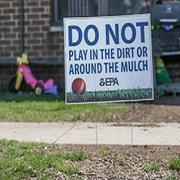
Environmental regulation is undergoing radical changes, posing a direct threat to America’s health and potentially deepening inequality. Since the spring of 2017, the Environmental Protection Agency (EPA) has proposed sharp cuts in the testing of children for lead exposure, and the Interior Department directed the National Academy of Sciences to cease studying the health effects of a common mining technique that deposits toxic minerals in ground waters. Meanwhile, recent investigative reports have documented that the appointment of top regulators with conflicting business interests at the EPA continues apace.
In an ongoing project and series of papers, Professor Robert Sampson and colleagues aim to explain why and how environmental inequality matters, providing new estimates of the sources and consequences of lead exposure. In a paper in the September, 2017 issue of the American Journal of Public Health (AJPH), Ph.D. Student Alix Winter and Sampson capitalize on a unique long-term study of over 200 infants from the birth cohort of the Project on Human Development in Chicago Neighborhoods matched to their blood lead levels at around age 3 years. They show that childhood blood-lead levels predict increases in impulsivity, anxiety or depression, and obesity in later adolescence. The finding that childhood lead exposure undermines adolescent wellbeing helps explain the persistence of racial and class inequalities, given structural pathways of initial exposure to lead (Sampson and Winter, The Racial Ecology of Lead Poisoning: Toxic Inequality in Chicago Neighborhoods, 1995-2013, Du Bois Review).
In another paper forthcoming in Criminology, Sampson and Winter examine the link between childhood lead poisoning and both parent-reported delinquent behavior and official arrest in late adolescence. Results from multiple analytic strategies that make different assumptions reveal a plausibly causal effect of lead exposure in childhood on adolescent delinquent behavior, but no direct link to arrests. The results underscore lead exposure as a trigger for poisoned development in the early life course and call for greater integration of the environment into theories of individual differences in delinquent behavior.
Teaming up with former Ph.D. student Christopher Muller, now Assistant Professor at the University of California-Berkeley, Sampson and Winter synthesize the cumulative scientific evidence on lead and environmental inequality more generally. In a paper forthcoming in the Annual Review of Sociology (2018), they argue that lead exposure is an important subject for sociological analysis because it is socially stratified and has important social consequences—consequences that themselves depend in part on children’s social environments. They present a model of environmental inequality over the life course to guide an agenda for future research. They conclude with a call for deeper exchange between urban sociology, environmental sociology, and public health, and for more collaboration between scholars and local communities in the pursuit of independent science for the common good.